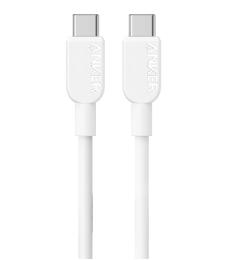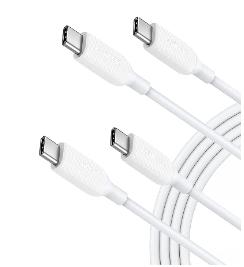In the dynamic world of technology, connectivity is paramount. Two of the most prevalent connectors in the market are USB-C and Lightning. While they may appear similar, they serve distinct ecosystems, each with its unique features and applications. This blog aims to delve into the differences between USB-C and Lightning, providing a comprehensive understanding of their functionalities and the scenarios in which they excel.

The Difference Between USB-C And Lightning
1. Physical Design and Connector Layout
Apple's Lightning connector was introduced in 2012 as a replacement for the 30-pin dock connector. Its key feature is its compact, symmetrical design with eight pins. This design allows users to plug in the cable without worrying about orientation, offering a seamless and user-friendly experience.
USB-C, short for Universal Serial Bus Type-C, is a standardized connector developed by the USB Implementers Forum. It features a versatile, symmetrical design with 24 pins arranged in a compact form factor. This allows for a reversible connection, making it compatible regardless of the orientation.
2. Ecosystem Compatibility
The Lightning connector is exclusive to Apple devices, including iPhones, iPads, and some iPod models. This proprietary standard ensures seamless integration within the Apple ecosystem, allowing for a cohesive user experience across devices.
In contrast, USB-C enjoys universal adoption. It is supported by a wide range of manufacturers, including Apple, Google, Microsoft, Samsung, and more. This broad compatibility makes USB-C a versatile choice for users who own devices from different brands or prefer flexibility in their tech setup.
3. Data Transfer Speeds
While the Lightning connector offers impressive data transfer speeds, it may not match the top-tier speeds of the latest USB standards. It is highly efficient for everyday tasks like syncing with iTunes and transferring files.
USB-C generally holds an advantage when it comes to faster transfer rates. The latest USB 3.2 and USB4 standards can achieve speeds of up to 40 Gbps, making it suitable for high-bandwidth tasks like 4K video editing and transferring large files.
4. Charging Capabilities
Lightning supports fast charging technologies for Apple devices. However, its power delivery capabilities may not be as versatile as USB-C, especially when charging non-Apple products.
With Power Delivery (PD) technology, USB-C can deliver higher levels of power, making it suitable for charging not only smartphones and tablets but also laptops and even some gaming consoles. This versatility positions USB-C as a reliable choice for various charging needs.
5. Audio and Video Output
The Lightning connector does not natively support video output. Instead, it relies on additional adapters or accessories to connect to external displays.
One of the key advantages of USB-C is its ability to transmit power, data, and audio/video signals simultaneously. This means a single USB-C port can be used for charging your laptop, connecting an external monitor, and transferring files—all with a single cable.

6. Accessories and Peripherals
Apple offers a wide range of accessories and peripherals designed specifically for Lightning-equipped devices. This ecosystem includes headphones, speakers, docks, and various adapters.
The USB-C standard has gained widespread acceptance, leading to a vast array of compatible accessories and peripherals from numerous manufacturers. This extensive ecosystem offers users a diverse selection of products to choose from.
7. Future-Proofing and Industry Adoption
The Lightning connector, being proprietary to Apple, is limited to Apple devices. Its future evolution and adoption by other manufacturers remain uncertain.
USB-C is the industry standard and enjoys widespread adoption across various brands and devices. Its universal compatibility and support from industry leaders make it a future-proof choice for consumers.
Conclusion
Choosing between usb c and Lightning ultimately depends on your specific needs and the devices you use. While Lightning excels within the Apple ecosystem, USB-C offers versatility and broad compatibility across various platforms. Understanding the nuances of these connectors empowers users to make informed decisions, ensuring seamless connectivity in their technological endeavors. Both USB-C and Lightning represent the pinnacle of modern connectivity standards, and embracing them means staying at the forefront of technological advancement.

